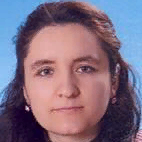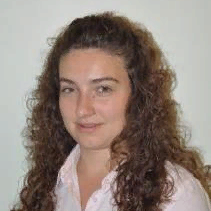International Journal of Image, Graphics and Signal Processing (IJIGSP)
IJIGSP Vol. 10, No. 10, 8 Oct. 2018
Cover page and Table of Contents: PDF (size: 868KB)
Breast Lesion Segmentation and Area Calculation for MR Images
Full Text (PDF, 868KB), PP.1-10
Views: 0 Downloads: 0
Author(s)
Index Terms
Breast cancer, lesion segmentation, region growing, snake algorithm, bit-quad method
Abstract
In this paper, our goal is to determine the boundaries of lesion and then calculate the area of existing lesion in breast magnetic resonance (MR) images to provide a useful information to the radiologists. For this purpose, at first stage region growing (RG) method and active contour model (Snake) is applied to the images to make the boundaries of lesion visible.
RG method is one of the simplest approaches for image segmentation and provides accurate results with lower computation time due to its seed point initialization step. Snake method molds a closed contour to the boundary of a region in an image and is also popular in medical image segmentation studies. In the presented study, both of these methods are utilized to determine the lesion boundaries.
After determining the boundaries of lesion accurately in the second stage of the study, bit-quad method is applied to the segmented images. Bit quad method is used to compute the area and perimeter of binary lesion images based on matching the logical state of regions of image to binary patterns. Finally, to evaluate the performance of the proposed study, computer simulations are performed. It is demonstrated via computer simulations that the lesion area and parameter values are very close to real values. By means of this study it is aimed to support radiologists during diagnosis and assessment of breast lesions.
Cite This Paper
Gökçen Çetinel, Sevda Gül, " Breast Lesion Segmentation and Area Calculation for MR Images", International Journal of Image, Graphics and Signal Processing(IJIGSP), Vol.10, No.10, pp. 1-10, 2018. DOI: 10.5815/ijigsp.2018.10.01
Reference
[1]Global Cancer Facts and Figures, 3rd Edition [Online]. Available: https://www.cancer.org/content/dam/cancer-org/research/cancer-facts-and-statistics/global-cancer-facts-and-figures/global-cancer-facts-and-figures-3rd-edition.pdf.
[2]The Ministry of Health of the Republic of Turkey, Turkey Cancer Statistics’data[Online].Available:http://kanser.gov.tr/Dosya/ca_istatistik/2014-RAPOR._uzun.pdf
[3]R. K. Justice, E. M. Stokely, J. S. Strobel, R. E. Ideker, and W. M. Smith, “Medical image segmentation using 3-D seeded region growing,” Management, vol. 3034, pp. 900–910, 1997.
[4]J. Wu, S. Poehlman, M.D. Noseworthy, M. V. Kamath, “Texture feature based automated seeded region growing in abdominal MRI segmentation”, International Conference on BioMedical Engineering and Informatics,2008, pp. 263-267.
[5]M.M.Synthuja, L. P. Suresh, M.J. Bosco, “Image segmentation using seeded region growing”, International Conference on Computing, Electronics and Electrical Technologies [ICCEET], 2012, pp. 576-583.
[6]H. Z. H. Zhang, S. W. F. S. W. Foo, S. M. Krishnan, and C. H. T. C. H. Thng, “Automated breast masses segmentation in digitized mammograms,” IEEE Int. Work. Biomed. Circuits Syst. 2004., pp. 2–5, 2004.
[7]A. Q. Al-faris, U. K. Ngah, N. Ashidi, M. Isa, and I. L. Shuaib, “Breast MRI tumor segmentation using modified seeded region growing based on particle swarm optimization image clustering”, Soft Computing in Industrial Applications, vol. 223, pp. 49–60, 2014.
[8]S. Kansal and P. Jain, “Automatic Seed Selection Algorithm for Image Segmentation Using Region Growing,” Int. J. Adv. Eng. Technol., vol. 8, no. 3, pp. 362-367, 2015.
[9]R. Rouhi, M. Jafari, S. Kasaei, P. Kashavazia, “Benign and malignant breast tumors classification based on region growing and CNN segmentation”, Expert Systems with Appl., 42,2005, pp. 990-1002.
[10]S. B. Gray, “Local Properties of Binary Images in Two Dimensions,” IEEE Trans. Comput., vol. C-20, no. 5, pp. 551–561, 1971.
[11]S. Gehlot, J. D. Kumar, “The Image Segmentation Techniques”, International Journal of Image Graphics and Signal Processing, vol. 2, pp. 9-18, 2017.
[12]K. Bhima, Dr. A. Jagan, “An Improved Method for Automatic Segmentation and Accurate detection of Brain Tumor in Multimodal MRI”, International Journal of Image Graphics and Signal Processing, vol. 5, pp. 1-8, 2017.
[13]A. B. Daho, M. Baughazi, “Segmentation of Abnormal Blood Cells for Biomedical Diagnostic Aid”, International Journal of Image Graphics and Signal Processing, vol. 1, pp. 30-35, 2018.
[14]A.K. Jumat, W. E. Rahman, A. İbrahim, R. Mahmud, “Segmentation of Masses Form Breast Ultrasound Images Using Parametric Active Contour Algorithm”, IEEE International Conference on Signal and Image Processing Applications, 2011, pp. 404-409.
[15]J. Liu, J. Wang, “Application of snake Model in Medical Image Segmentation”, Journal of Convergence Information Technology, Vol. 9, 2014, pp. 105-109.
[16]M. Kass, A. Witkin, D. Terzopoulos, “Sankes : Active Contour Models”, International Journal of computer Visions, Vol1. 4, 1987, pp. 321-331.
[17]R. Samadani, “Adaptive Snakes: Contol of Damping and Material Parameters”, Proc. SPIE Conference on Geometric Methods in Computer Vision, 1970, San Diego, CA, pp. 202-213.
[18]L. Ji, H. Yan, “Loop-Free Snakes for Image Segmentation” Porc. 1999 International Conference on Image Processing Kobe, Japan,1999, pp. 193-197.
[19]R. O. Duda, “Image Segmentation and Description” unpublishes notes, 1975.
[20]W. K. Pratt, Processing Digital Image Processing, John Wiley and Sons Inc., 3. Edition, 2001.
[21]G. Çetinel, S. Gül, “Detection of lesion boundaries in breast magnetic resonance imaging with Otsu thresholding and Fuzzy c-means”, 5.th International Conference on Advanced Technologies and Sciences, 2017.

